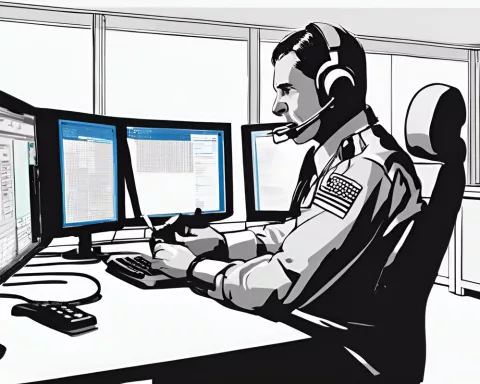On a cold evening, British Airways flight 58 faced a sudden emergency when smoke filled its cockpit above Cape Town. Thanks to quick thinking by the pilots and fast action from Cape Town’s emergency teams, the plane landed safely. Firefighters, medical staff, and airport crews worked together smoothly, helping passengers exit calmly without panic. This event showed how teamwork, training, and calm minds can turn danger into a story of strength and safety.
How did Cape Town’s emergency teams successfully handle the smoke emergency on British Airways flight 58?
Cape Town’s emergency teams responded swiftly by activating a phase 2 emergency, coordinating fire, medical, and aviation staff. Pilots executed safety protocols, firefighters positioned strategically, and passengers were evacuated calmly—showcasing expert crisis management, teamwork, and advanced preparedness in aviation emergencies.
A Routine Flight Interrupted
On a chilly Wednesday evening, the city of Cape Town glittered beneath a canopy of city lights, as its residents went about their nightly routines. Above this urban luminescence, far from ground-level concerns, British Airways flight 58 made its way toward London. For nearly two hours, the journey was uneventful—a testament to the reliability of modern aviation. But tranquility gave way to tension when smoke infiltrated the cockpit of the Airbus A350, thrusting both crew and passengers into the heart of an unfolding emergency.
The Airbus A350 represents the latest in aircraft design, marrying decades of aeronautical ingenuity with cutting-edge technology. Its presence in the skies is a direct result of relentless progress, stretching from the earliest flying machines to today’s sleek, fuel-efficient jets. Yet, for all the advancements in engineering, aviation continues to carry inherent risks. In-flight smoke remains among the gravest hazards, signaling an immediate threat that demands swift, decisive action.
As the initial shock faded, the pilots’ years of training took over. In a matter of moments, they weighed their options and decided to return to Cape Town, prioritizing safety above all else. Their response, shaped by extensive simulation exercises and real-world drills, would soon become a masterclass in crisis management, seamlessly integrating human judgment with technical protocol.
The Orchestration of Emergency Response
Inside the cockpit, procedures shifted from routine to urgent. The crew methodically executed every step laid out for emergencies of this nature: shutting down non-essential systems, managing engine power, severing fuel lines, and maintaining transparent communication with air traffic control. Each decision reflected lessons learned from past incidents, demonstrating how aviation’s safety culture builds on both innovation and the hard truths of history.
On the ground, Cape Town’s emergency teams mobilized quickly. JP Smith, a key figure in the city’s Safety and Security portfolio, later recounted the unfolding situation through social media updates. The airport’s Fire & Rescue division wasted no time, enacting a ‘phase 2 emergency response’—a protocol that calls for the highest level of readiness without sacrificing order or control. This system, refined over decades, ensures that all moving parts—fire pumps, EMS crews, aviation staff—interact seamlessly.
Four massive fire engines rumbled into strategic positions, their lights reflecting off the tarmac. Teams of firefighters and paramedics took up stations, radios in hand, ready for any development. The airport, serving as both a local landmark and a global transit hub, buzzed with heightened focus. It’s in these moments—when every second counts—that the true mettle of a city’s infrastructure and its people come to the fore.
Within the terminal, the atmosphere was tense but orderly. Travelers watched emergency vehicles lining up outside, drawing reassurance from the visible demonstration of preparedness. The synchronization between cockpit and ground crew became a powerful dance of logistics and discipline. When the aircraft finally touched down, the pilots brought it to a controlled stop, shutting down the engines and fuel supply in a textbook application of safety protocols—effectively neutralizing any chance of escalation.
Calm Amidst Crisis: Evacuation and Aftermath
As the aircraft came to rest, emergency personnel sprang into action. Firefighters and medical teams, clad in high-visibility gear and equipped for any eventuality, approached with measured calm. Their professionalism spoke volumes—years of rigorous training distilled into clear, confident execution. The evacuation process unfolded smoothly; passengers exited the aircraft in an orderly fashion, guided by both the crew’s instructions and the airport’s emergency staff.
This measured approach to evacuation reflects just how far aviation safety has advanced. Modern aircraft cabins feature materials and layouts designed to facilitate rapid egress, and crew members train relentlessly for these scenarios. The passengers, shaken but unharmed, emerged into the cool night air of Cape Town, the collective relief almost tangible amidst the subdued chaos of the scene. No serious injuries occurred, and panic never took hold—a testament to both preparation and poise.
Behind the scenes, city officials and emergency coordinators monitored every detail. JP Smith and his colleagues reaffirmed their commitment to public safety, using real-time communications to keep both the public and the media informed. In today’s interconnected world, transparency and timely updates are as crucial as technical prowess, offering reassurance and building trust at times of uncertainty.
As the immediate danger subsided, attention shifted to understanding what went wrong. Investigators began the methodical process of examining every aspect of the incident. They gathered flight data, questioned crew members, and reviewed maintenance logs, assembling a comprehensive picture. The goal extended beyond simply assigning blame; each inquiry seeks to identify opportunities for improvement, feeding into the relentless cycle that makes commercial aviation one of the safest modes of travel.
Lessons in Preparedness and Community
The successful handling of this crisis underscored the essential role of collaboration across disciplines and institutions. Aviation emergencies rarely stay confined to the cockpit; they ripple outward, touching emergency services, airport management, and the broader community. Cape Town’s ability to mount such an effective response draws on the city’s unique blend of tradition and modernity—a trait deeply embedded in its public safety ethos.
Emergency teams in Cape Town build upon a rich legacy. From historical firefighting units charting the city’s early days to today’s tech-savvy first responders, the underlying values of readiness, bravery, and selflessness remain unchanged. Modern tools and vehicles enhance their capabilities, but the core mission endures: protect life and maintain order, even under the most challenging circumstances.
This incident also highlighted the psychological and social dimensions of such emergencies. Faced with sudden peril, both passengers and crew became part of a shared experience, their reactions shaped by instinct and training. In the aftermath, stories of cooperation and calm will likely persist—some as fleeting anecdotes, others as deeper reflections on the interconnected systems and people that keep air travel functioning.
Beyond the Emergency: Reinforcing a Culture of Safety
As investigators continue their work, every step of the response comes under careful review. This scrutiny isn’t about assigning fault, but about fostering a culture of continuous learning. Each emergency—no matter how well contained—offers lessons that help shape future protocols and training. Cape Town International Airport, like its global counterparts, stands as both a symbol of progress and a fortress against uncertainty.
Once the immediate crisis passed, normal airport operations resumed, but the memory of that Wednesday night will linger for those involved. Firefighters checked their gear, medical teams debriefed, and airport staff returned to routine duties, all with a renewed sense of purpose. Experiences like these strengthen the resolve of public safety professionals, reinforcing their commitment to vigilance and readiness.
Globally, aviation continues to captivate the imagination and stir apprehension in equal measure. Each well-handled emergency, like the one in Cape Town, becomes part of the ongoing narrative of human achievement in flight. These stories reveal not only the vulnerabilities of our interconnected world but also the enduring capacity for resilience, innovation, and collective action in the face of adversity.
FAQ: Crisis in the Skies – British Airways Flight 58 Emergency Over Cape Town
1. What caused the emergency on British Airways flight 58 above Cape Town?
The emergency was triggered by smoke filling the cockpit of the Airbus A350 during the flight. While the exact technical cause was subject to investigation, in-flight smoke is considered one of the gravest hazards in aviation, indicating a potential fire or system malfunction that requires immediate attention and response.
2. How did the pilots respond to the smoke emergency onboard?
The pilots acted swiftly and decisively, applying emergency protocols designed for such situations. They shut down non-essential systems, managed engine power, isolated fuel lines, maintained constant communication with air traffic control, and prioritized returning to Cape Town Airport for an emergency landing. Their extensive training and calm judgment were crucial in managing the crisis effectively.
3. What role did Cape Town’s emergency teams play in handling the situation?
Cape Town’s emergency teams—including firefighters, medical staff, and airport personnel—activated a ‘phase 2 emergency response,’ the highest preparedness level before full-scale emergency. Fire engines and rescue teams positioned strategically, ready to intervene immediately upon landing. Their coordinated efforts ensured a smooth, calm evacuation of passengers without panic or injury.
4. How were passengers evacuated, and what safety measures aided this process?
Passengers were guided to exit the aircraft in an orderly and calm fashion, directed by the flight crew and emergency staff. Modern aircraft like the Airbus A350 are designed with safety features facilitating rapid evacuation, such as clearly marked exits and materials that reduce fire risk. Crew members undergo rigorous training to manage evacuations efficiently, contributing to the safe outcome.
5. What does this incident reveal about aviation safety and emergency preparedness?
This event highlights the effectiveness of rigorous training, well-established protocols, and seamless teamwork across multiple agencies. Aviation safety is built on decades of learning from past incidents, continuous improvement, and a culture of preparedness. The cooperation between cockpit crew and ground emergency responders exemplifies how risks can be minimized even in critical moments.
6. What happens next after such an emergency incident at an airport?
Following the incident, investigators conduct a thorough review including flight data analysis, crew interviews, and maintenance record examination. The goal is to identify the root cause and opportunities to improve safety protocols. Meanwhile, emergency teams debrief and refine their procedures. The airport resumes normal operations, continually reinforcing its commitment to safety and readiness for future emergencies.
If you have more questions about aviation safety or emergency response protocols, feel free to ask!












